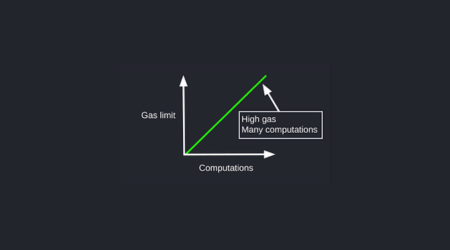Are you tired of being blindsided by transaction fees in your Solidity smart contracts? Don’t worry, we’ve got you covered.
In this article, we will dive deep into the factors that affect transaction fees and show you how to optimize gas usage, calculate fees, and reduce costs.
Whether you’re a seasoned developer or just starting out, understanding transaction fees is crucial for successful contract deployment.
So grab your coffee and get ready to master the art of cost-efficient smart contracts.
1. Key Takeaways
- Network congestion impacts transaction fees
- Gas prices fluctuate based on network congestion
- Gas limit determines the maximum gas consumption
- Optimizing gas usage reduces transaction costs
2. Factors Affecting Transaction Fees in Solidity Smart Contracts
When choosing the gas price for your transactions, you need to consider factors such as network congestion and gas limits.
Network congestion in solidity smart contracts has a direct impact on transaction fees. When the network is congested, transactions take longer to process, resulting in higher fees.
It is also important to compare transaction fees across different blockchain networks for solidity smart contracts to determine the most cost-effective option.
Understanding these factors will help you make informed decisions when it comes to gas and gas prices in smart contract transactions.
3. Gas and Gas Prices in Smart Contract Transactions
To avoid confusion, you should be aware that gas and gas prices play a crucial role in the execution of transactions within your smart contracts.
Gas fees are the costs associated with running operations on the blockchain, and they are influenced by network congestion. Fluctuations in gas prices can impact transaction fees, as higher prices result in more expensive transactions.
Understanding gas limit and gas usage in solidity contracts is essential to optimizing your smart contract’s performance and minimizing transaction costs.
4. Understanding Gas Limit and Gas Usage in Solidity Contracts
Gas limit and gas usage are important concepts to grasp in Solidity contracts. To ensure efficient execution of your smart contracts and avoid running out of gas, it is crucial to optimize your gas limit and understand how gas is consumed.
Here are five key points to consider:
- Gas limit determines the maximum amount of gas that can be consumed in a transaction.
- Gas usage refers to the actual amount of gas used during the execution of a transaction.
- Gas estimation techniques help you estimate the gas required for a specific operation.
- Optimizing gas limit can prevent out-of-gas errors and unnecessary gas fees.
- Understanding gas usage allows you to fine-tune your contracts for better efficiency.
Now, let’s delve into optimizing gas usage in Solidity smart contracts.
5. Optimizing Gas Usage in Solidity Smart Contracts
You can optimize gas usage in your Solidity smart contracts by implementing efficient coding techniques. By using gas optimization techniques, you can reduce the amount of gas required for executing your contracts, resulting in lower transaction fees.
One important aspect of gas optimization is gas fee estimation. By accurately estimating the gas fees required for each operation in your contract, you can avoid overestimating and wasting gas. This helps in optimizing the overall cost of executing your contracts.
Now, let’s delve into transaction fee calculation in Solidity contracts.
6. Transaction Fee Calculation in Solidity Contracts
When it comes to gas cost implications in Solidity smart contracts, it’s important to understand how transaction fees are calculated. By optimizing transaction fees, you can ensure that your smart contracts are efficient and cost-effective.
This discussion will delve into the factors that affect gas costs and provide strategies for optimizing transaction fees in your Solidity smart contracts.
I. Gas Cost Implications
To minimize costs, it’s essential to consider the implications of gas fees in your Solidity smart contracts. Gas fees play a crucial role in the execution of transactions on the Ethereum network. Here are five important things to keep in mind regarding gas cost implications:
- Gas fees are the charges required to perform operations on the Ethereum network.
- The transaction fee calculation method depends on the complexity of the contract’s code and the amount of data being processed.
- Gas fee estimation techniques help in predicting the costs before executing the transactions.
- Higher gas consumption can lead to increased fees and slower transaction processing.
- Optimizing gas usage in your smart contracts can help reduce transaction fees without compromising functionality.
Understanding the gas cost implications is just the first step towards minimizing expenses in your Solidity smart contracts. Now, let’s dive into optimizing transaction fees for even greater cost efficiency.
II. Optimizing Transaction Fees
Optimizing transaction fees in your Solidity code can lead to more cost-efficient execution on the Ethereum network. Minimizing gas costs is crucial to ensure that your smart contracts are economically viable.
By carefully managing the operations and data storage in your code, you can reduce the amount of gas required for each transaction. This not only saves you money but also improves the overall user experience.
Now, let’s explore some tips for reducing transaction fees in Solidity smart contracts.
7. Tips for Reducing Transaction Fees in Solidity Smart Contracts
One way to reduce transaction fees in Solidity smart contracts is by using gas-efficient coding techniques. Here are five tips to help you optimize your transaction fees and reduce gas fees:
- Minimize unnecessary computations to save gas.
- Use uint256 instead of uint8 or uint16 to avoid unnecessary conversions.
- Implement batch processing to combine multiple operations into a single transaction.
- Use events instead of returning values to reduce gas costs.
- Optimize storage usage by using mappings instead of arrays where possible.




